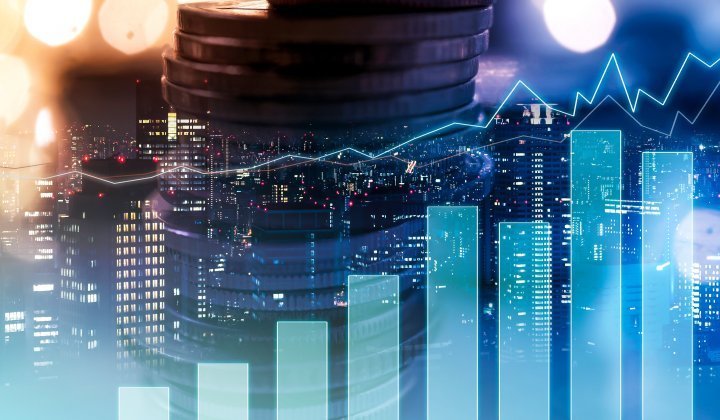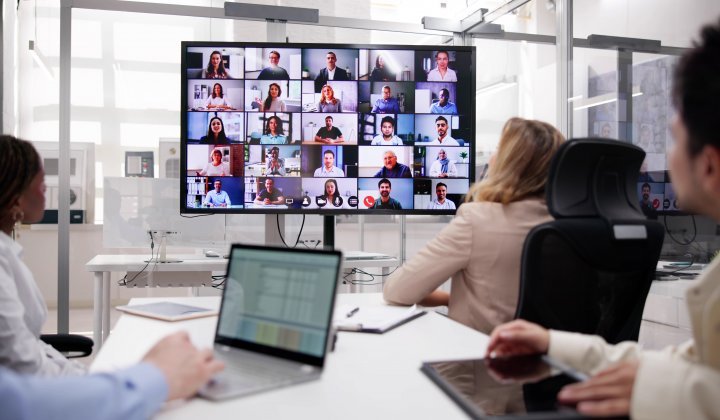I blame ChatGPT. The media hullabaloo around this artificial intelligence bot is the reason I pitched this feature in the first place. Journalists are facing a war of attrition in an ever-evolving media landscape as it is, but very few writers would have imagined they might lose work opportunities to some upstart "virtual agent".
In effect, that is exactly what the early iterations of ChatGPT were: a real-time messaging app utilised on customer service websites. These beta versions may have been rather crude when it came to mimicking human dialogue, but it had one big advantage going for them…
The software engineers used generative AI, with added RLTHF thrown in for good measure. This acronym translates as "reinforcement learning through human feedback", which allowed the programme to learn from its mistakes and consistently improve on answers to an ever-increasing range of questions.
It only took a few years for ChatGPT to become a genuine threat to entry-level copywriters or journalists, specifically those working on technical websites and manuals. The harnessing of neural networking and advanced algorithms accelerated exponential learning, meaning that AI – with the right prompts – could essentially now write a novel.
Language is not the only area where machines are now challenging humans for jobs, with AI forcing its way into the digital imaging sector, too. Author Jacqui Palumbo states in an incisive feature published on artsy.net: “AI will have the biggest impact on photography since the digital camera.”
This contextualises the potential impact of this new machine-learning software: it constitutes an uncharted quantum leap, and could theoretically change every iota of what we understand photography to be. It may in fact even signal the end of cameras and imaging devices as we currently know them.
Post-production software like Portrait Pro, Da Vinci Resolve and Adobe’s stable of programs have been utilising basic AI for more than a decade, with face recognition, marque selection and dynamic range optimisation enabling photographers to manipulate the basic raw images they have captured.
However, predictive algorithms now enable programs to seamlessly detect and change skin tone and eye colour on a model, or digitally manipulate their facial structure and physical anatomy. Deep generative AI takes this process even further, allowing anyone to effectively perform virtual reality identity theft by swapping one person’s face with another.
These synthetic media creations are known as deepfakes (a portmanteau of "deep learning" and "fake"). It is important to consider that this is not a new practice and has been performed for decades in darkrooms, but the current level of deception is such that it has become impossible to judge the integrity of any image without having access to the raw metadata.
This is partly why the next giant leap for AI kind could be so problematic. Some of the latest cameras being produced now have artificial intelligence capabilities embedded into the actual device, allowing them to predict composition, smiles or movement, or automatically adjust any photograph to make it more pleasing.
You could, for example, program the camera to capture a sunset, even when it is raining, or in other ways sense certain scenarios, and adapt or improve on them. This may seem a purely cosmetic feature right now, but tweaking this process to add virtual elements to a photograph at will – with the camera’s raw metadata still intact – is on the event horizon.
Susan Sontag, arguably one of our era’s most influential contemporary social critics, famously stated that “the painter constructs, the photographer discloses”. This is certainly no longer the case, and any image you see in its reproduced form should be questioned, especially when programs such as Midjourney, DALL-E or Stable Diffusion are being used.
However, digital imagineers must remember that AI processes operating in the background – both in-camera or during post-production – are saving you time and allowing you to deliver more efficiently. This includes batch processing, red-eye correction, facial recognition sorting, resolution enhancing and noise reduction, to name but a few.
The priority for every digital creator right now should be to consistently track AI evolution and ensure that this becomes your tool, rather than your competitor. Opportunities include the use of the software to generate image concepts for submission to potential clients, instead of days of shooting and editing photographs to ensure you are on brief.
Upscaling presents another new potential income stream. This enhancement technology allows you to dramatically improve the resolution, dynamic range and sharpness of photos you took years ago in order to bring additional imagery up to agency spec, thus adding historic depth to your portfolio.
In the end, as Aza Holmes said, “Photographs are just time and light.” This may still hold true as part of the bigger picture, but more important will be how you as a digital creative plan to incorporate AI to improve your own career prospects.
How to spot deepfakes
Artificial intelligence in imaging is here to stay, with deepfakes in both photography and video a given across the full future visual landscape. Here are a few ways in which you can tell AI fact from fiction, some gleaned from an article on www.npr.org. Do keep in mind that these clues may become impossible to detect as software improves.
1. SIFT
Research scientist Michael Caulfield advises that you use the four steps in his model: Stop (and think); Investigate (various reliable sources); Find (other media coverage of the event); and Trace (the original context). This allows you to use your own "common sense software" to assess the reliability of the visual thread.
2. AI detection
Current software options such as hive moderation allow you to run diagnostics to ascertain whether an image is real by zooming in on pixels and checking continuity. It is by no means failsafe, but using it in conjunction with a modicum of media literacy will improve chances of spotting a fake.
3. Imperfect fakes
AI fakes are by no means perfect, and looking closely at line discontinuation, distortion and depth of field may allow you to spot red flags. Generators battle to create realistic hands and eyes, and often there are no shadows or reflections to balance out subjects. The more people in an image, the more difficult it is to make it realistic.
4. Location, location
Google trustworthy photos of the actual location where the image was reportedly shot. The clues may be in the background: for example, check if the building, vegetation or city backdrop match the so-called news source information.
5. Moving imagery
Video is even more difficult to fake than photographs. Look out for people who do not blink, lagging audio or glitching mouth movement, and a lack of facial expression or subtle movements linked to breathing and eye tracking.
6. Disclosure
Ethically, the above may not yet be enshrined in law in many countries, but it stands to reason that any AI image you create should be labelled as such on social media to give the necessary context should it be shared on the web.
"They don't have models of the world. They don't reason. They don't know what facts are … They're basically autocomplete on steroids. They predict what words would be plausible in some context, and plausible is not the same as true." - Gary Marcus, cognitive scientist and professor emeritus at New York University
How image creators can harness AI
It is impossible to predict what AI will be able to accomplish in the next decade, but here is a concise list of current ways you can harness the technology and expedite your workflow.
1. Pre-shoot client brief
Use AI technology to create a storyboard explaining the various photo scenarios you aim to create and shoot. This even goes as far as showing various poses you would like the model to execute.
2. Composition and lighting
Commercial photographers can easily present a specific composition concept before the shoot takes place. AI apps such as Imagine allow you to specify lighting sources and direction, depth of field, lens parameters, and much more.
3. Automating metadata
Why waste time by adding keywords to every single photo when AI can use facial and subject recognition and do this automatically?
4. Virtual scouting
Instead of spending a day driving around looking for good shoot locations, type "Best sunset views in Cape Town" into ChatGPT, and select the best options from these.
5. Post-production
Imaging workflow after a shoot is often where you spend most of your time. Instead, get AI to identify a subject, check they are in focus, smiling or have their eyes open, and save precious hours.
6. Image quality
Use the vast array of AI tools to sharpen soft images, upscale resolution on imagery shot on older cameras, automatically reduce noise on photos shot at a high ISO, or even zoom crop without reducing your image pixel size.
7. Control lighting
AI allows you to create a mask of the sky (or of a specific subject) and manipulate the exposure on only that segment of the image. This would allow you to substitute grey clouds with a sunrise, and cast warm light on your subject.
8. AI apps and software
Get intelligent on your mobile device with these apps and programs: MotionLeap and PixlR are two great image-editing apps, both incorporating AI functions to assist in on-the-fly editing. Imagine is more of a text-to-image engine, and comes into its own when you subscribe to the paid version. Adobe Express is currently running AI as a beta add-on, but is a brand you can always trust.
"The advent of the digital age and the immediacy and convenience of digital video and photography allows people to become an integral part of the feedback loop, which actively shapes the content we are fed." – Damian Loeb, artist and visionary








